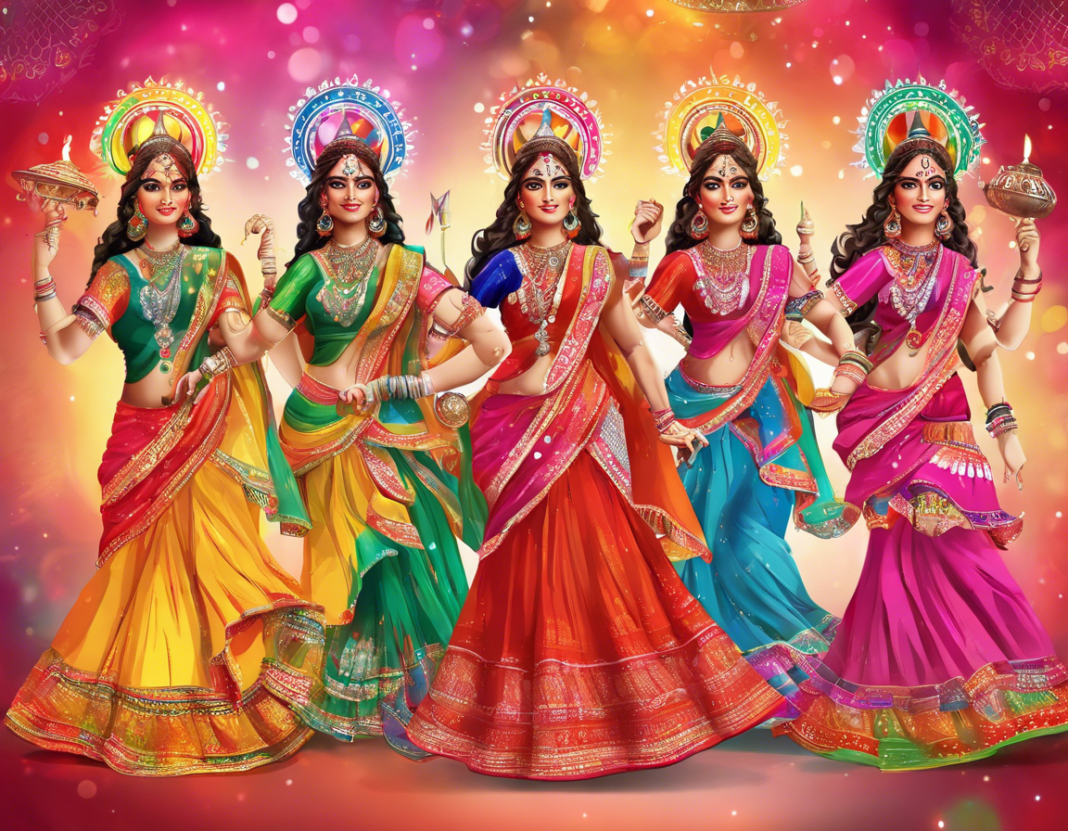Introduction
Navratri is a vibrant Hindu festival that spans over nine nights and is celebrated with great fervor across India and in many parts of the world. Each day of Navratri is dedicated to worshiping different forms of the Goddess Durga. One common tradition observed during Navratri is wearing specific colors on each day that correspond to the nine avatars of the Goddess. The choice of colors is not arbitrary but deeply rooted in the symbolism and significance attached to each day and each color. In this blog post, we will delve into the colors to wear for each day of Navratri 2023 and the meanings associated with them.
Day 1: Pratipada – Grey
The first day of Navratri is associated with the color grey, symbolizing strength and stability. Grey represents the calmness and composure required to embark on a spiritual journey. It signifies the beginning of Navratri festivities with prayers for a fresh start and seeking the blessings of the Goddess for a new beginning.
Day 2: Dwitiya – Orange
On the second day, devotees wear orange, a color that represents energy and happiness. Orange symbolizes optimism, enthusiasm, and the vibrancy of life. It is believed to invoke a sense of wellness and vitality, uplifting the spirits and preparing devotees for the days ahead.
Day 3: Tritiya – White
White is the color for the third day of Navratri, signifying purity and peace. White symbolizes clarity, serenity, and the Goddess’s grace. It is worn to seek divine blessings and purify the mind and soul, fostering a sense of harmony and tranquility.
Day 4: Chaturthi – Red
Red is the color for the fourth day of Navratri, representing power and passion. Red symbolizes energy, determination, and the fierce aspect of the Goddess. It is worn to invoke courage, strength, and protection, guiding devotees through challenges and obstacles.
Day 5: Panchami – Royal Blue
The fifth day is associated with the color royal blue, symbolizing wisdom and intelligence. Royal blue represents contemplation, depth, and the pursuit of knowledge. It is believed to enhance focus, intuition, and understanding, aiding devotees in spiritual advancement.
Day 6: Shashti – Yellow
Yellow is the color for the sixth day of Navratri, representing joy and positivity. Yellow symbolizes enlightenment, happiness, and the blessings of the Goddess. It is worn to radiate warmth, optimism, and cheerfulness, spreading joy and auspiciousness.
Day 7: Saptami – Green
On the seventh day, devotees wear green, a color symbolizing growth and harmony. Green represents fertility, prosperity, and the nurturing aspect of the Goddess. It is believed to bring abundance, renewal, and balance, fostering well-being and abundance.
Day 8: Ashtami – Peacock Green
Peacock green is the color for the eighth day of Navratri, symbolizing elegance and beauty. Peacock green represents grace, creativity, and the divine manifestation of the Goddess. It is worn to celebrate artistic expression, aesthetics, and the exuberance of life.
Day 9: Navami – Purple
The ninth day is associated with the color purple, symbolizing spirituality and royalty. Purple represents devotion, transformation, and the culmination of Navratri celebrations. It is worn to honor the Goddess’s spiritual essence, seeking enlightenment, and divine blessings.
Frequently Asked Questions (FAQs)
Q1: Can I wear different shades of the recommended colors on each Navratri day?
A1: While it is ideal to wear the specified colors for each day of Navratri, you can also opt for different shades within the same color family if the exact color is not available.
Q2: Are there any specific rules or taboos associated with wearing colors during Navratri?
A2: There are no strict rules or taboos associated with wearing colors during Navratri. The emphasis is on expressing devotion and respect through clothing choices.
Q3: What if I am unable to wear the designated color for a particular day of Navratri?
A3: If you are unable to wear the prescribed color for a specific day, you can still participate in the festivities with a symbol or accessory in the correct color to honor the Goddess.
Q4: Can men also follow the tradition of wearing specific colors during Navratri?
A4: Yes, men can also participate in the tradition of wearing specific colors during Navratri. They can opt for traditional attire or accessories in the recommended colors.
Q5: What is the significance of wearing colors during Navratri?
A5: Wearing specific colors during Navratri is believed to attract positive energies, enhance spiritual focus, and strengthen the connection with the divine during the nine-day festival.
Conclusion
The tradition of wearing specific colors during Navratri adds a colorful and symbolic element to the celebration, inviting devotees to connect with the divine energies of the Goddess through vibrant hues. By incorporating these colors into your attire each day, you can embrace the essence and significance of each Navratri day, seeking blessings, strength, and spiritual growth. Let the spectrum of colors guide you through the nine nights of Navratri, filling your heart and soul with devotion, joy, and reverence for the Goddess Durga.










